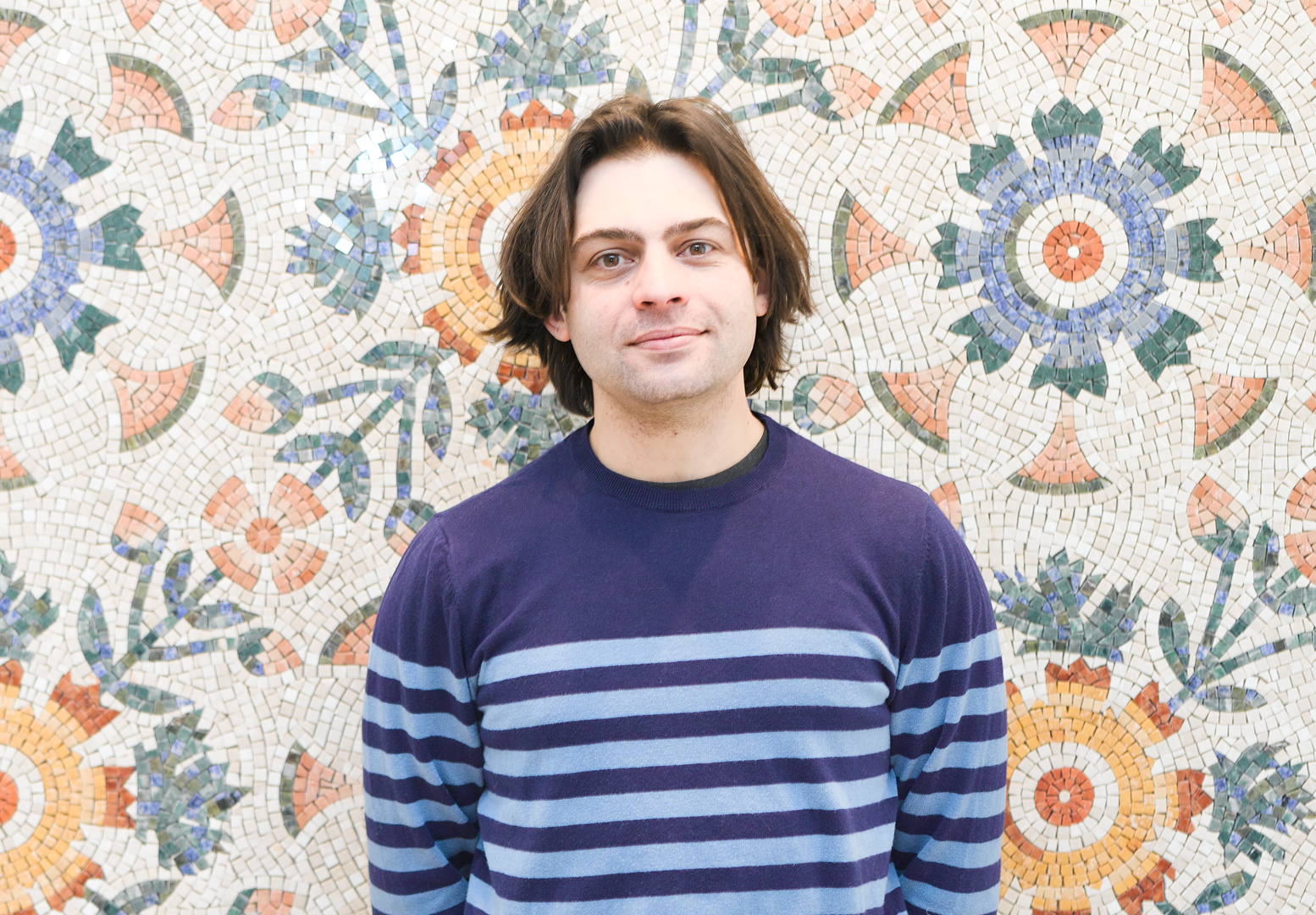A meeting with Igor Marziali, internationally renowned Italian master mosaicist, who moved to Montreal to be the creative leader of Ciot Studio’s workshop.
Master mosaicists are rather rare in the world, since there is only one school awarding a degree in fine arts in this ancestral discipline: the Scuola Mosaicisti del Friuli, located in northeastern Italy. It was at this school that Igor Marziali studied, before teaching there for 15 years. A master of his art, he distinguishes himself by a know-how and creativity that have earned him an international reputation. His art work is found in all corners of the world, including in the parliament of Rome, at the Tokyo-Mitsubishi Bank in Japan and at Ground Zero, where he created Iridescent Lightning, a mosaic of more than 38 meters, a gift offered by Italy to the United States to emphasize the reconstruction of this emblematic location.
We went to meet the Italian artist in his workshop in Montreal to discuss his passion, his projects and his daily inspiration.
Mosaic, an artistic tradition of 4000 years
Marziali knows the history of the mosaic very well, for he taught it to his students in Italy for a long time. “Mosaic is not just making a design with stones! It is a lot more than that. You have to have respect for the material and respect for the history of this art”, Marziali tells us convincingly. Originating in Greece around the 8th century B.C., the art of mosaic was then developed and mastered by the Romans, who used it widely throughout their empire. “At first”, explains Marziali, “the mosaic was used to cover the floors of houses that were made of clay, to make them more durable, water-resistant and easier to clean. Mosaic did not have a decorative vocation, but a purely utilitarian one: the motifs were very simple and the colors were those of the stones at hand. Then, slowly but surely, the patterns and designs became more and more complex, representing the family life of the home owner, his travels and his hobbies. At that time, only the wealthiest could afford to have such floors, because they were expensive to make and required the work of several craftsmen. Therefore, mosaic quickly became a symbol of social status.”
Marziali specifies that it was in the Byzantine era that the vocation of the mosaic became truly artistic. “Mosaics started to be put on the walls of Christian basilicas to illustrate biblical scenes so that the mostly illiterate population could learn the catechism. Wall mosaics are also used to illuminate the dark interior of churches: the cold and intense colors used in the Byzantine mosaics reflect the natural light”, he explains. It is also at this moment in time that gold and precious stones are integrated into the mosaics, which made them real works of art. During the following centuries, this art, so costly and tedious to make, becomes less and less popular and almost disappears. But in the 1860s, at the time of the construction of the grand opera of Paris, the Palais Garnier, the Italian mosaicist Giandomenico Facchina invented a revolutionary technique that is still used to this day: the indirect assembly of the mosaic. This technique consists of breaking down the artwork into smaller pieces which are realized in mirror image. It also makes it possible to preassemble the tesserae of the mosaic in the workshop, which facilitates the work of the craftsmen, who until that moment had to work on site to draw the motif, cut the stones and assemble the artwork directly on the walls and domes.
In the 1920s, the art nouveau movement and its artists such as Gustav Klimt and Antoni Gaudi rediscovered the splendours of this old art, integrating it in public spaces in particular. The famous Güell Park in Barcelona, a UNESCO World Heritage Site, is a good example. Today, passionate artists such as Igor Marziali are working to make this art form more accessible and even integrating it in our home projects.

Creating a personalized artwork
Begin at the helm of the creative workshop at Ciot, Igor puts his talent, know-how and creativity at the service of individuals who wish to integrate a mosaic into their décor. In cooperation with Igor and Léonor Leclair, the artistic director of the studio, the client participates in almost all the stages of the realization of his tailor-made artwork: from drawing the draft, choosing the artistic style (figurative, abstract, etc.) to the selection of the materials. “It is a meticulous job that is the result of a close collaboration with the client. Each piece of stone is hand cut and put in its precise and carefully considered spot.”
Igor works the stone with his martellina, a small hammer with a wooden handle and a half-moon shaped steel head. “It’s exactly the same tool the Romans used”, he explains with a smile. “We are the only ones here to use this ancient method. The North American artisans tend to work with more modern pliers to cut the stones, but I prefer the martellina, because it allows me to do more things and there is something special about using an object that has been around for thousands of years.”
Once the artwork is finished, it is installed at the client’s house: on the wall, on the ceiling, on the floor, or even on a piece of furniture! This is an original and very unique way of collecting art and decorating your interior at the same time. “Owning a handmade mosaic means having something precious and unique, made with precious material that has a history of its own“, emphasizes Igor.
For the less creative clients, the studio offers two ready-to-install collections of artistic mosaics: Concerto and Genesis, featuring a variety of motifs, from the most classic to the most contemporary, they can be installed as is or can be slightly modified if needed. Igor and his creative team are realizing small to big projects for different kinds of clients: residential, commercial or even institutional.
Everyday life inspiration and the freedom to be oneself
For the Italian artist, the inspiration comes from everyday life. “When I’m walking, I take the time to look around, to see, but also to listen. Inspiration is everywhere! In nature, music, but also in the conversations and interactions I have every day with my clients.” What is the key to integrate art and creativity into our everyday life according to Marziali? Stop thinking! “In my opinion we overthink a lot of things in our life; we give too much importance to our daily limitations! To create, you have to feel free!” According to Igor, we have to be able to let our minds run freely and without judgement. “Don’t think about what others expect of you! We also have to stop judging ourselves, because it blocks our creativity and prevents us to realize our full potential. First and foremost we have to create for ourselves.” What beautiful words to get you started on your next creative project!

Mosaic explained in five steps
1. Mosaic is the art of assembling small pieces of material to form a decorative motive to cover a surface or an object.
2. The most common used materials are marble, granite and glass, but artists also use metal, wood and a host of other materials.
3. For bright colors, Igor and the artisans of Ciot Studio exclusively use the precious Murano glass, imported directly from Venice.
4. Several contemporary artists have touched upon this artistic medium: Klimt, Gaudi, Chagall and Dali, to name a few.
5. Different mosaics are figuring on the UNESCO’s World Heritage List and can be admired on several sites around the world: at the Sagrada Familia (Spain), at the colorful Güell Park (Spain), in Pompei (Italy) where perfectly preserved Roman mosaics can be found, on the floor of the Westminster Abbey (United Kingdom), etc.




